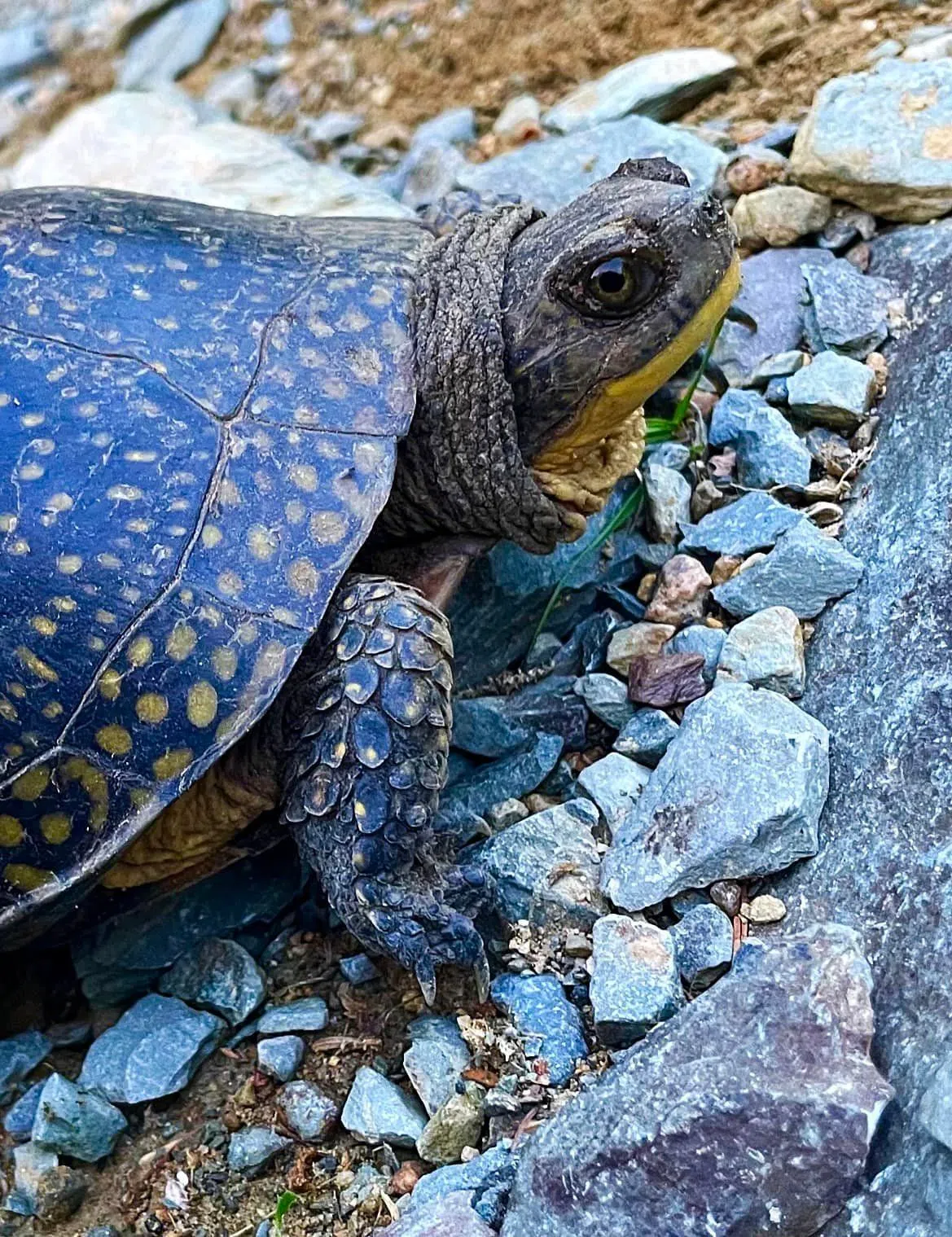
Blanding turtles are one of the four freshwater turtle species that live in Nova Scotia. Photo: MTI.
With Summer just around the corner turtles across Nova Scotia are now in their nesting season.
Researchers at the Mersey Tobiatic Institute (MTI) who study turtles are asking Nova Scotians to be aware and take precautions during nesting season from late May into mid-July.
“Nesting season is when turtles are at their most vulnerable,” said MTI Board member Tom Herman “You’ll often see them crossing roads due to the loose soil and sun exposure which they like for their nests,”.
Herman says in most cases if you see a turtle crossing a road you should wait until they safely cross. If you have familiarity handling turtles he says moving them towards the side of the road they are facing is also a good idea, but you shouldn’t expose yourself to danger doing so.
You should not move turtles large distances as it can disorient them and hinder their nesting.
Nova Scotia has four species of turtles found in freshwater habitats. While adult turtles have very few predators, other animals like crows, bears and raccoons will dig up turtle nests to eat the eggs and hatchlings. All four turtle species in the Province are considered “at risk”.
This year in particularly the researchers at MTI are hoping turtles can lay their eggs without disturbances due to concerns from last years nesting season.
The sex of three of the four turtle species present in Nova Scotia is determined by ground temperatures during incubation, and due to last year’s intense dry and wet periods, there are concerns that the weather may have skewed the sexes of turtles born.
Warmer temperatures result in females while cooler drier conditions lead to male turtles.
“We won’t know the extent of that issue until we can analyze some of the hatchlings from last year,” said Herman. “Were hopeful we’ll see a good mix of sexes because if you have too many of one gender it creates challenges for mating down the line.”
In the event you find a turtle on a road in distress, you should contact the Department of Natural Resources.









